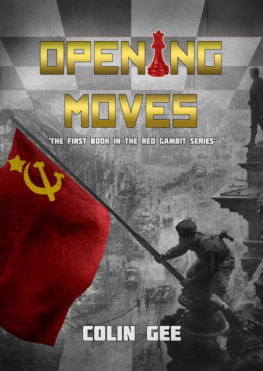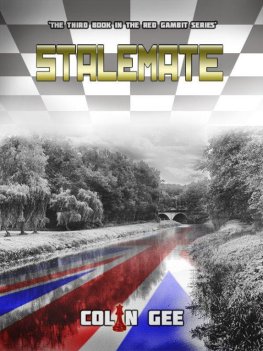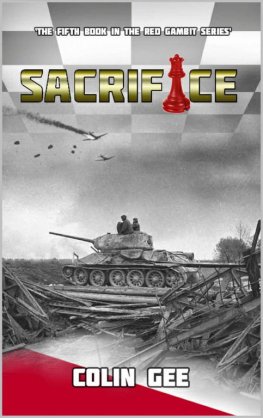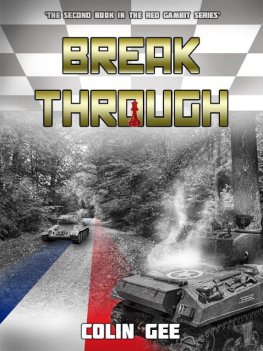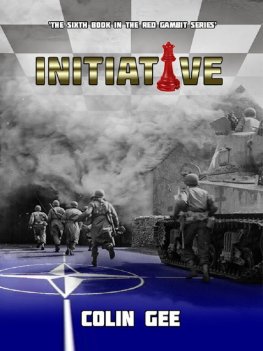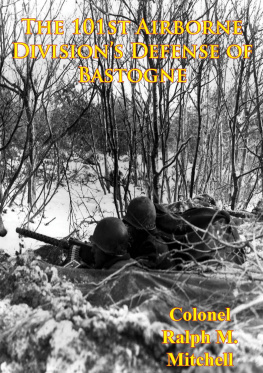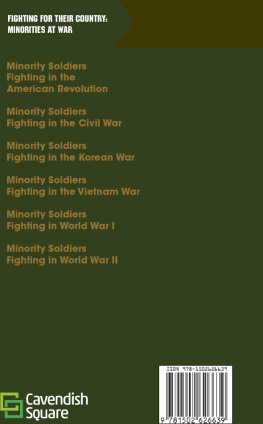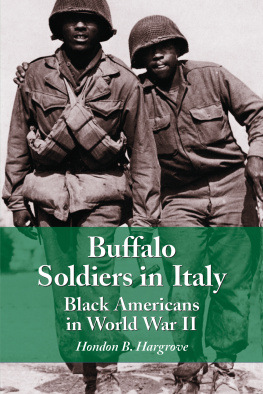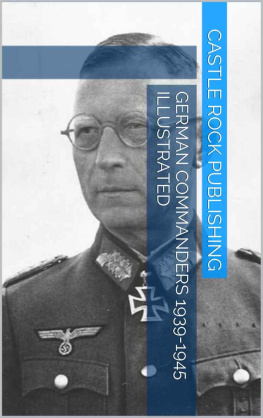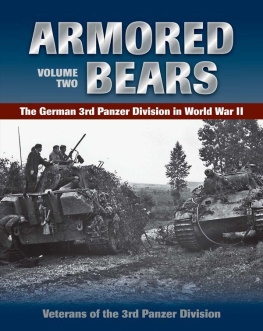T he Red Gambit series of five books is dedicated to my grandfather, the boss-fellah, Jack Chalky White, Chief Petty Officer [Engine Room] RN, my de facto father until his untimely death from cancer in 1983 and a man who, along with many millions of others, participated in the epic of history that we know as World War Two. Their efforts and sacrifices made it possible for us to read of it, in freedom, today.
Thank you, for everything.
Overview by Author Colin Gee
T he general concept of these books addresses the fears of war-weary nations in 1945.
The World War was drawing to a close, with solely the Empire of Japan to vanquish and yet, in the hour of triumph, the European victors stood facing each other across the ravaged terrain of their former German foe, not in friendship, but in worry and suspicion.
There was a genuine fear amongst some allied servicemen and public alike that the communist Red Army, much vaunted during the years of the struggle against Nazism, and so very obviously capable and professional, would continue its crushing advance to the shores of the Atlantic itself.
On the Soviet side, similar concerns and fears were realised in different ways, as all that could be seen was a relatively unblooded group of capitalist nations posturing and dictating to a Rodina that had spilt so much blood in everyones name. As I progressed in my research, I found a number of things that could have given the Soviets reason to doubt the alliance and feel threatened. Much of what is set before you in the lead up to the conflict has a basis in fact.
Neither sides soldiers wished for more combat, for most had seen enough to last a thousand lifetimes. Despite that, and somewhat perversely, it seems that it was the Soviet soldier who was more prepared to continue against former allies, despite the immense sacrifices he and his Motherland had already endured. Political indoctrination played a great part in that obviously, as much about Western Europe and America had been criticised and held as false.
That what developed became known to all as The Cold War is an historical fact. However, what could have happened is laid out in these books as if the reader is taking onboard a factual account of those difficult days. Indeed, much of the book, leading up to hostilities is based upon accepted facts, probably more than the reader might care to believe.
It is not my intention to do anything other than to illustrate that there are no bad peoples, just bad people. It is my hope that the reader will be able to see the strengths and weaknesses of the characters and be able to appreciate the qualities each brings forth, regardless of the nation or group to which the individual belongs.
We must all give thanks that it never happened but may possibly wonder what might have come to pass had it all gone badly wrong in that hot European summer of 1945.
I have deliberately written nothing that can be attributed to that greatest of Englishmen, Sir Winston Churchill. I considered myself neither capable nor worthy to attempt to convey what he might have thought or said in my own words.
My profound thanks to all those who have contributed in whatever way to this project, as every little piece of help brought me closer to my goal.
This then is my offering to satisfy the what ifs of those times.
[For additional information, progress reports, orders of battle, discussion, freebies, and interaction with the author please find time to visit and register at one of the following:
www.redgambitseries.com, www.redgambitseries.co.uk, www.redgambitseries.eu,
Also, feel free to join Facebook Group Red Gambit.]
Thank you.
I have received a great deal of assistance in researching, translating, advice and support during the two and a half years that this project has run so far. In no particular order, I would like to record my thanks to all of the following for their contributions. Gary Wild, Jason Litchfield, Mario Wildenauer, Pat Walsh, Elena Schuster, Stilla Fendt, Luitpold Krieger, Mark Lambert, Greg Winton, Greg Percival, Brian Proctor, Steve Bailey, Bruce Towers, Victoria Coling, Alexandra Coling, Heather Coling, Isabel Pierce Ward, Ahmed Al-Obeidi, and finally BW-UK Gaming Clan.
One name is missing on the request of the party involved, who perversely has given me more help and guidance in this project than most, but whose desire to remain in the background on all things means I have to observe his wish not to name him.
None the less, to you my oldest friend, thank you.
Wikipedia is a wonderful thing and I have used it as my first port of call for much of the research for the series. Use it and support it.
My thanks to the US Army Center of Military History website for providing the out of copyright images.
All map work is original, save for the Chteau outline which derives from a public domain handout.
If I have missed anyone or any agency I apologise and promise to rectify the omission at the earliest opportunity.
Authors Note
T he correlation between the Allied and Soviet forces is difficult to assess for a number of reasons.
Neither side could claim that their units were all at full strength, and information on the relevant strengths over the period this book is set in is limited as far as the Allies are concerned and relatively non-existent for the Soviet forces.
I have had to use some licence regarding force strengths and I hope that the critics will not be too harsh with me if I get things wrong in that regard. A Soviet Rifle Division could vary in strength from the size of two thousand men to be as high as nine thousand men, and in some special cases could be even more.

